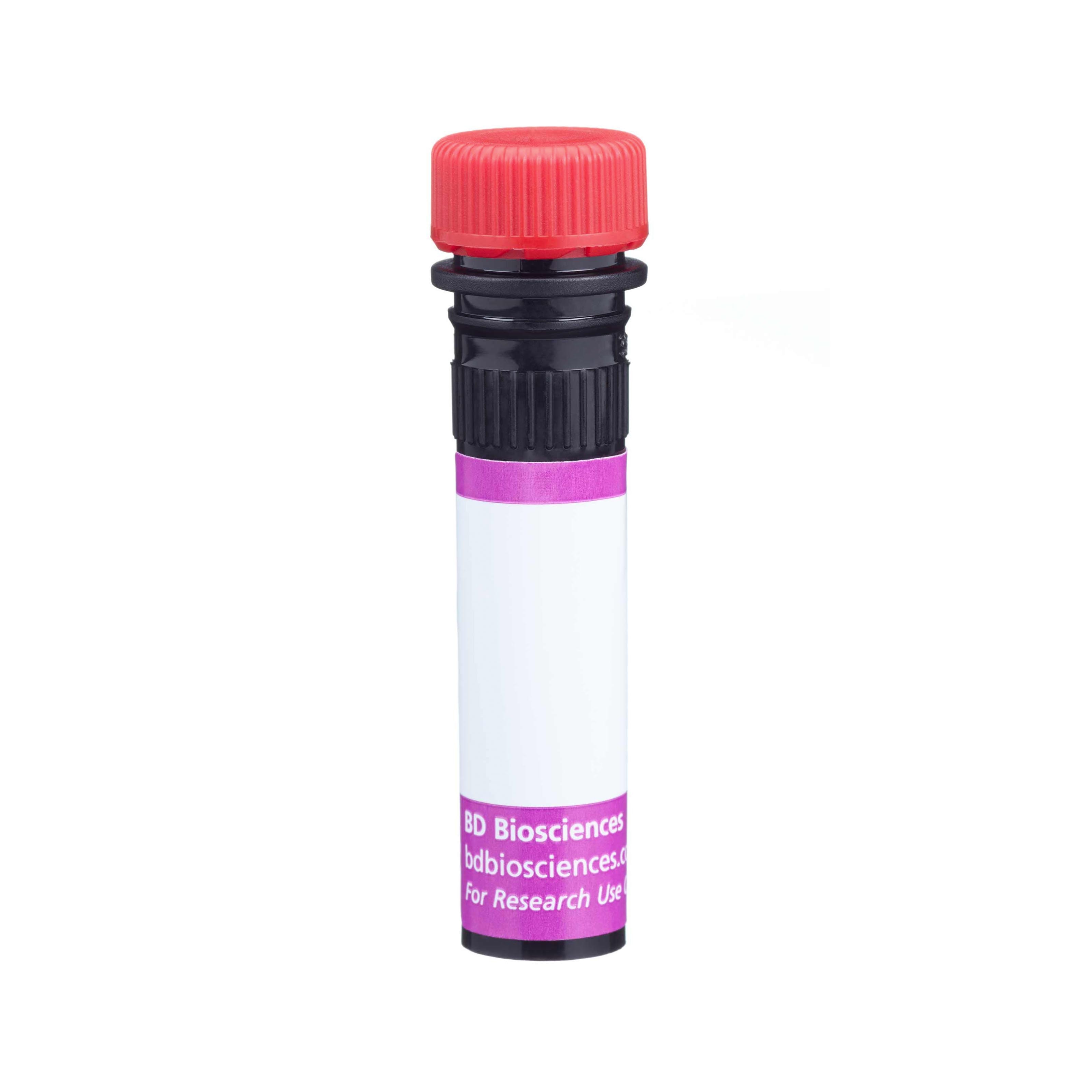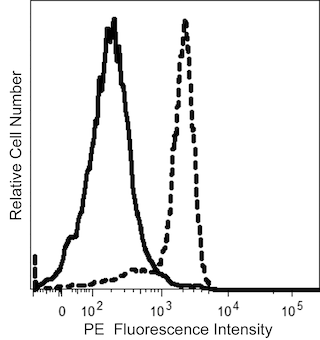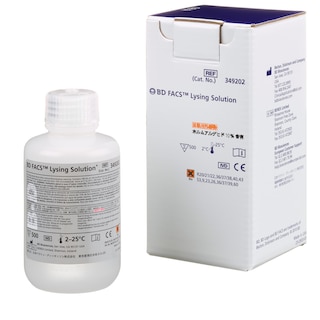-
Your selected country is
Middle East / Africa
- Change country/language
Old Browser
This page has been recently translated and is available in French now.
Looks like you're visiting us from {countryName}.
Would you like to stay on the current country site or be switched to your country?


Regulatory Status Legend
Any use of products other than the permitted use without the express written authorization of Becton, Dickinson and Company is strictly prohibited.
Preparation And Storage
Recommended Assay Procedures
For optimal and reproducible results, BD Horizon Brilliant Stain Buffer should be used anytime two or more BD Horizon Brilliant dyes (including BD OptiBuild Brilliant reagents) are used in the same experiment. Fluorescent dye interactions may cause staining artifacts which may affect data interpretation. The BD Horizon Brilliant Stain Buffer was designed to minimize these interactions. More information can be found in the Technical Data Sheet of the BD Horizon Brilliant Stain Buffer (Cat. No. 563794).
Product Notices
- This antibody was developed for use in flow cytometry.
- The production process underwent stringent testing and validation to assure that it generates a high-quality conjugate with consistent performance and specific binding activity. However, verification testing has not been performed on all conjugate lots.
- Researchers should determine the optimal concentration of this reagent for their individual applications.
- An isotype control should be used at the same concentration as the antibody of interest.
- Caution: Sodium azide yields highly toxic hydrazoic acid under acidic conditions. Dilute azide compounds in running water before discarding to avoid accumulation of potentially explosive deposits in plumbing.
- For fluorochrome spectra and suitable instrument settings, please refer to our Multicolor Flow Cytometry web page at www.bdbiosciences.com/colors.
- Please refer to www.bdbiosciences.com/us/s/resources for technical protocols.
- BD Horizon Brilliant Stain Buffer is covered by one or more of the following US patents: 8,110,673; 8,158,444; 8,575,303; 8,354,239.
- BD Horizon Brilliant™ Violet 750 is covered by one or more of the following US patents: 8,158,444; 8,802,450; 8,575,303; 8,455,613; 8,227,187; 8,841,072; 8,110,673.
Companion Products






The RUU-PL7F12 monoclonal antibody specifically recognizes CD61, a 110 kDa type I transmembrane glycoprotein, also known as Glycoprotein IIIa (gpIIIa), the common β-subunit (integrin β3-chain) of the gpIIb/IIIa complex and the vitronectin receptor (VNR). The gpIIb/IIIa complex and the VNR are integrins, ie, α/β-heterodimeric glycoprotein complexes that are involved in cell adhesion. With the CD41 antigen (gpIIb or αIIb), the CD61 antigen forms the gpIIb/IIIa complex, which acts as a receptor for fibrinogen, von Willebrand factor (vWf), fibronectin, and vitronectin on activated platelets. With the CD51 antigen (VNR α-chain or αv), the CD61 antigen forms the VNR, which mediates activation-independent cell adhesion to vitronectin, vWf, fibrinogen, and thrombospondin. The CD61 antigen is found on all normal resting and activated platelets. Platelets from individuals with Glanzmann's thrombasthenia show a >90% reduction of binding of CD61, and heterozygote carriers of the disorder show approximately 50% reduction. The CD61 antigen is also found on endothelial cells, megakaryocytes, and on some myeloid, erythroid, and T-lymphoid leukemic cell lines.
The antibody was conjugated to BD Horizon™ BV750 which is part of the BD Horizon Brilliant™ Violet family of dyes. This dye is a tandem fluorochrome of BD Horizon BV421 with an Ex Max of 405-nm and an acceptor dye with an Em Max at 750-nm. BD Horizon Brilliant BV750 can be excited by the violet laser (405 nm) and detected with a 750/30 nm filter with a 740 nm long pass. Due to spectral differences between labeled cells and beads, using BD™ CompBeads can result in incorrect spillover values when used with BD Horizon BV750 reagents. Therefore, the use of BD CompBeads or BD CompBeads Plus to determine spillover values for these reagents is not recommended.

Development References (13)
-
Abrams CS, Ellison N, Budzynski AZ, Shattil SJ. Direct detection of activated platelets and platelet-derived microparticles in humans.. Blood. 1990; 75(1):128-38. (Biology). View Reference
-
Fijnheer R, Modderman PW, Veldman H, et al. Detection of platelet activation with monoclonal antibodies and flow cytometry. Changes during platelet storage.. Transfusion. 1990; 30(1):20-5. (Biology). View Reference
-
Fitzgerald LA, Steiner B, Rall SC, Lo SS, Phillips DR. Protein sequence of endothelial glycoprotein IIIa derived from a cDNA clone. Identity with platelet glycoprotein IIIa and similarity to "integrin".. J Biol Chem. 1987; 262(9):3936-9. (Biology). View Reference
-
Hynes RO. Integrins: versatility, modulation, and signaling in cell adhesion. Cell. 1992; 69(1):11-25. (Biology). View Reference
-
Jennings LK, Ashmun RA, Wang WC, Dockter ME. Analysis of human platelet glycoproteins IIb-IIIa and Glanzmann's thrombasthenia in whole blood by flow cytometry.. Blood. 1986; 68(1):173-9. (Biology). View Reference
-
Modderman PW. CD29/CDw49, CD47, CD51, CD55, and CD61. In: Knapp W. W. Knapp .. et al., ed. Leucocyte typing IV : white cell differentiation antigens. Oxford New York: Oxford University Press; 1989:1017-1019.
-
Modderman PW. Cluster report: CD61. In: Knapp W. W. Knapp .. et al., ed. Leucocyte typing IV : white cell differentiation antigens. Oxford New York: Oxford University Press; 1989:1025.
-
Parmentier S, Kaplan C, Catimel B, McGregor JL. New families of adhesion molecules play a vital role in platelet functions.. Immunol Today. 1990; 11(7):225-7. (Biology). View Reference
-
Shattil SJ, Hoxie JA, Cunningham M, Brass LF. Changes in the platelet membrane glycoprotein IIb.IIIa complex during platelet activation.. J Biol Chem. 1985; 260(20):11107-14. (Biology). View Reference
-
Springer TA. Adhesion receptors of the immune system. Nature. 1990; 346(6283):425-434. (Biology). View Reference
-
Wong DA, Springer TA. CD61 (b3) cluster report. In: Schlossman SF. Stuart F. Schlossman .. et al., ed. Leucocyte typing V : white cell differentiation antigens : proceedings of the fifth international workshop and conference held in Boston, USA, 3-7 November, 1993. Oxford: Oxford University Press; 1995:1664-1665. View Reference
-
von dem Borne AEGKr, Modderman PW, Admiraal LG, Nieuwenhuis, HK. Platelet antibodies, the overall results. In: Knapp W. W. Knapp .. et al., ed. Leucocyte typing IV : white cell differentiation antigens. Oxford New York: Oxford University Press; 1989:951-966.
-
von dem Borne AEGKr, Modderman PW. Cluster report: CD41. In: Knapp W. W. Knapp .. et al., ed. Leucocyte typing IV : white cell differentiation antigens. Oxford New York: Oxford University Press; 1989:997-999.
Please refer to Support Documents for Quality Certificates
Global - Refer to manufacturer's instructions for use and related User Manuals and Technical data sheets before using this products as described
Comparisons, where applicable, are made against older BD Technology, manual methods or are general performance claims. Comparisons are not made against non-BD technologies, unless otherwise noted.
For Research Use Only. Not for use in diagnostic or therapeutic procedures.
Report a Site Issue
This form is intended to help us improve our website experience. For other support, please visit our Contact Us page.